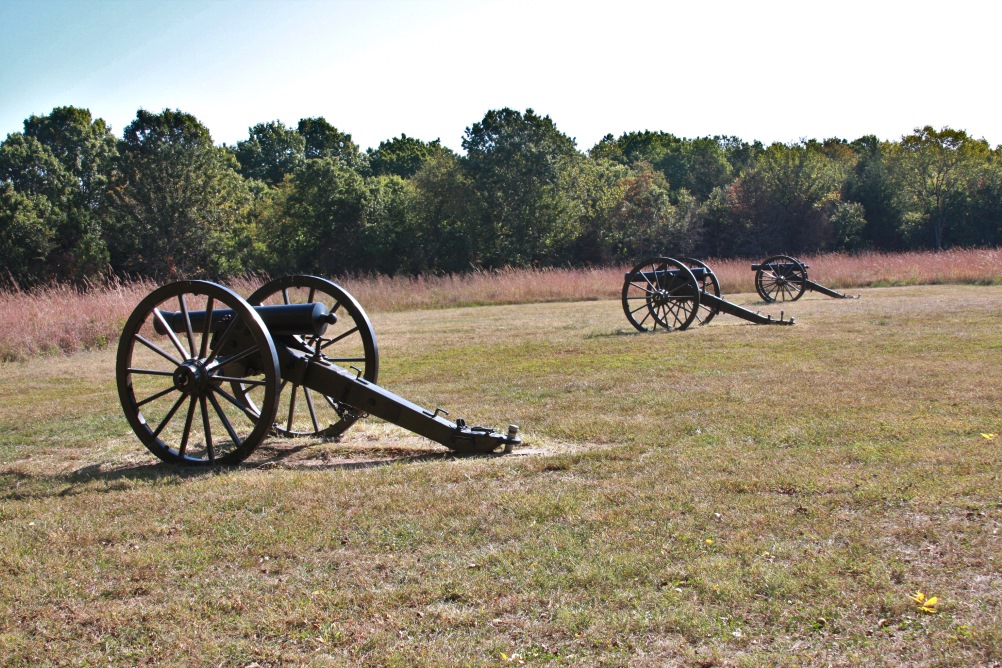October 5, 2022 @ 08:00 CST
Site Visit #51
Mention the American Civil War to someone and most often, they will think of such names as Gettysburg, Antietam, Bull Run, and maybe Vicksburg. The theater west of the Mississippi River is often forgotten, yet only Virginia and Tennessee counted more battles and skirmishes than did Missouri.
One could argue that the Civil War started in Missouri long before 1861. The Missouri Compromise of 1820 required new states to be added in pairs – one free and one slave. Missouri entered as a slave state while Maine joined as a free state.
The Missouri Compromise was eventually replaced by the Kansas-Nebraska act, which called for the popular vote in each new state to determine if slavery were to exist. Kansas became a battleground as both pro- and anti-slavery forces descended on the state, often using violence to try and intimidate voters.
This violence overflowed into Missouri, which, though technically a slave state, had a strong anti-slavery sentiment. The state legislature was pro-union and voted not to secede when other slave states did so. The governor was pro-slavery and determined to get Missouri into the new Confederacy.
Nathaniel Lyon was a Captain commanding troops at an arsenal in Missouri. He learned of the governor’s plan to send a state militia to seize the arsenal. He attempted to negotiate with the governor but when that failed, led troops to occupy the state capital. The governor’s militia fled south to join with Confederate troops in Arkansas.
The stage was set for the first major battle west of the Mississippi. It was less than three weeks after the disastrous (from the Union view) battle of Bull Run. Confederate troops moved into Missouri near Springfield. Lyon, now a general, moved south to meet them, joined by a contingent of German immigrants, fiercely loyal to the Union, and led by Franz Sigel.

Lyon designed a pincer attack, with Sigel moving to the southeast. The early attack caught the Confederate troops by surprise, and the battle raged on a hill soon dubbed Bloody Hill for over five hours. Unfortunately, Sigel’s attack from the southeast had failed, and the Confederate troops eventually forced the Union to retreat.
Though they technically won the battle, the southern troops and their Missouri allies were unable to exploit the victory to bring Missouri into the Confederacy. Lyon’s actions had secured Missouri for the Union, though battles would rage through it for the duration of the war.
Unfortunately, Lyon never knew of his success. Around 9:30, already wounded multiple times, Lyon was killed leading troops in a counterattack. He was the first Union general killed in action in the Civil War.
The Park Service preserves a large chunk of the original battlefield. Unlike more famous eastern battlefields, this one lacked a lot of monuments and markers. The 4.9-mile driving tour circles the battlefield with eight designated stops which are explained in the park brochure and on signs at each stop. Entrance to the loop road requires payment of a park entrance fee, or possession of a park pass of some type (such as my senior pass).
There are both hiking and horse trails that will let one venture inside the driving loop to a few sites such as battery locations and the site of Lyon’s death. I would have liked to have had time to venture down some of them but would have needed a few more hours than I had to do so. Perhaps in a future visit.
I was familiar with the battle names of Wilson’s Creek and Pea Ridge, but like so people, knew very little about them. As with almost every park visit I have made, I left this park far more familiar with both the battle and the events leading to it.
Steve